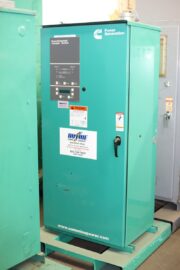As a facilities manager, you’re no stranger to the importance of maintaining critical equipment to ensure the smooth operation of your facility. When it comes to backup power systems, a generator is often the first thing that comes to mind. However, there’s another crucial component that plays a pivotal role in ensuring seamless power transitions – the Automatic Transfer Switch (ATS). In this article, we’ll delve into the often-overlooked generator transfer switch and its significance in your backup power system.
The ATS: Your Generator’s Brain
Imagine the ATS as the brain of your generator. It’s the unsung hero that stands between you and potential power outages. The ATS detects the loss of utility power and commands the generator to start up, providing your facility with backup power. Without a properly functioning ATS, your generator might not kick in when it’s needed the most.
Parts Prone to Failure
Just like any other machinery, the components of an auto transfer switch are subject to wear and tear over time. Here are some of the parts that can fail if not regularly maintained:
- Contactors: These are responsible for making or breaking electrical connections within the ATS. Over time, contactors can become worn out due to the constant electrical load they handle.
- Relays and Sensors: These components are essential for detecting changes in the power supply and signaling the ATS to switch between utility power and generator power. A malfunctioning relay or sensor could lead to improper power transfer or no transfer at all.
- Environmental Damage: Dust, dirt, water, and even rainwater can infiltrate your ATS, causing damage to delicate electrical components. This is especially true in locations prone to harsh weather conditions.

Real-Life Consequences
Let’s consider a real-life scenario: A facility with an aging ATS located in a beach community.
Over the years, the auto transfer switch rusted due to exposure to salty air. Eventually, this corrosion weakened the structure of the ATS and opened a hole. During the next heavy rain, water found its way into the ATS through this hole, causing an electrical malfunction that affected the entire backup power system.
The damage was extensive, leading to costly repairs and prolonged downtime.
The Need for Regular Testing and Maintenance
Regular testing and maintenance of your backup power equipment, including the ATS, are imperative to avoid such scenarios. Here’s why:
- Reliability: A well-maintained generator transfer switch ensures that your backup power system works reliably when utility power fails, preventing disruptions to your facility’s operations.
- Safety: A malfunctioning ATS could compromise the safety of your facility by causing electrical hazards or failing to provide power to critical systems like fire alarms and emergency lighting.
- Cost Savings: Investing in routine ATS maintenance can save you money in the long run by preventing major breakdowns and the associated repair costs.
Conclusion
The Automatic Transfer Switch might not be as visible as the generator itself, but it’s a vital component that ensures the seamless transition from utility power to backup power. Its proper functioning is paramount in preventing disruptions and maintaining the safety of your facility. Regular servicing and testing of the ATS can save you from potential headaches caused by unexpected power failures.
As a facilities manager, recognizing the importance of ATS maintenance is a step toward safeguarding your building’s operations and ensuring the reliability of your backup power system. Don’t let your ATS become an afterthought – give it the attention it deserves and keep your facility powered even in the face of unexpected outages.


